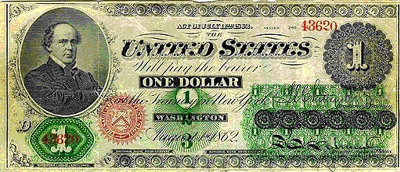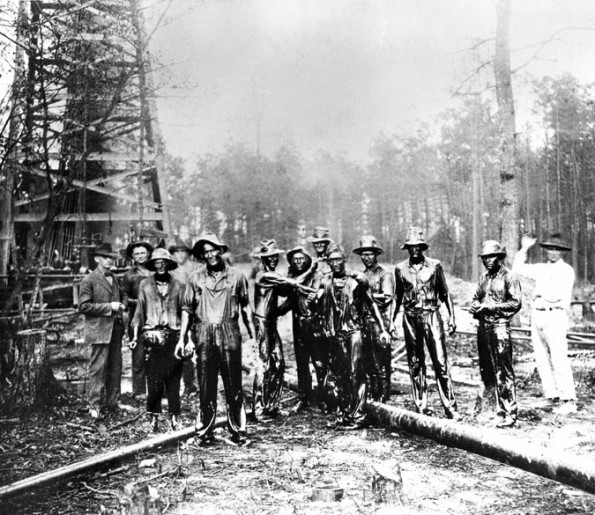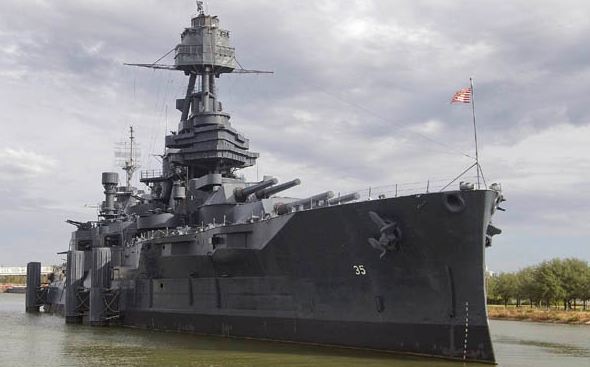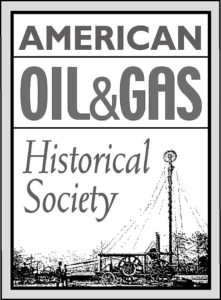This Week in Petroleum History: June 30 – July 6
June 30, 1864 – Oil Tax funds Civil War –
The federal government taxed oil for the first time when it levied a $1 per barrel tax on production from Pennsylvania oilfields.

Seeking ways to pay for the Civil War, Treasury Secretary Salmon Chase advocated an oil tax of $6.30 per barrel.
Desperate for revenue to fund the Civil War as early as 1862, Treasury Secretary Salmon Chase advocated a $6.30 tax per barrel of oil and $10.50 per barrel on refined products. Angry oil producers rallied against the tax in Oil City, Pennsylvania, and sent delegates to Washington, D.C., where they negotiated a tax of $1 per 42-gallon barrel of oil.
July 1, 1919 – Top Independent Producers associate in Tulsa –
The two-year-old Mid-Continent Oil & Gas Association established its Kansas-Oklahoma Division in boom town Tulsa. Members were a “who’s who” of top independent oil and natural gas producers.
Today the U.S. Oil & Gas Association, membership in 1919 included Frank Phillips of Phillips Petroleum; E.W. Marland, whose company became Conoco; W.G. Skelly, founder of Skelly Oil; H.H. Champlin, founder of Champlin Oil; and Alf Landon, the 1936 Republican presidential candidate. Robert Kerr of Kerr-McGee Oil Company presided as president of the Mid-Continent Division from 1935 through 1941.
July 1, 1922 – Smackover Field brings Arkansas Drilling Boom
First settled by French fur trappers in 1844, Smackover, Arkansas, had a population of just 90 people in 1922 when a wildcat well erupted oil. The well, drilled to 2,066 feet by sawmill owner Sidney Umsted, discovered the 25,000-acre Smackover field. Within six months, 1,000 wells were drilled with a success rate of 92 percent.

Roughnecks photographed following the July 1, 1922, discovery of the Smackover (Richardson) field in Union County. Photo courtesy of the Southwest Arkansas Regional Archives.
Smackover’s population grew to 25,000 and its uncommon name quickly attained national attention. Nearby less than two years earlier, the first commercial oil well in Arkansas, the Busey-Armstrong No. 1, had revealed the giant El Dorado field and launched the career of a young H.L. Hunt.
Learn more in First Arkansas Oil Wells.
July 1, 1938 – The Texas Company discovers Illinois Oilfield
Using a newly introduced technology of seismic exploration, petroleum geologists found hidden anticlines with commercial quantities of oil in Marion County, Illinois. By January 1939 the Salem field was ranked seventh in U.S. daily production. In one year the field produced more than 20 million barrels of oil.
Natural gas production in Illinois began as early as 1853 when marsh or “drift gas” was produced from two water wells drilled near Champaign. The state’s first drilling boom arrived in 1906, thanks to the John Shore No. 1 oil well in Crawford County, according to the Illinois Oilfield Museum.
July 2, 1910 – President Taft establishes Naval Petroleum Reserves
As the Navy converted from coal to oil-burning ships, President William Howard Taft established three Naval Petroleum Reserves.
“As a prospective large consumer of oil by reason of the increasing use of fuel oil by the Navy, the federal government is directly concerned both in encouraging rational development and at the same time ensuring the longest possible life to the oil supply,” the president declared in a message to Congress.

Commissioned in 1914 with coal-powered boilers that were converted to use fuel oil in 1925, the U.S.S. Texas “was the most powerful weapon in the world.”
The last U.S. battleship to be built with coal-fired boilers, the U.S.S. Texas, was launched in 1912 and converted to oil-fired boilers in 1926.
Learn more in Petroleum and Sea Power.
July 2, 1913 – First Gasoline-Electric Hybrid Locomotive
While most U.S. trains were still steam-powered, General Electric built the first commercially successful gasoline-powered engine locomotive. Two General Motors 175-horsepower V-8s powered two 600-volt, direct current generators to propel the 57-ton locomotive to a top speed of 51 miles per hour.

Many consider the locomotive “Dan Patch” the first successful internal combustion engine locomotive in the United States.
The Electric Line of Minnesota Company purchased the new gasoline-powered electric hybrid for $34,500, naming it “Dan Patch” in honor of the world’s champion harness horse of the time. By 1930, diesel engines with G.E. generators launched the modern train industry with Streamliners.
July 2, 1920 – West Columbia Oilfield discovered in Texas
The Abrams No. 1 well erupted oil in Brazoria County, Texas, revealing the West Columbia oilfield southwest of Houston. Drilled by the Texas Company (the future Texaco), the well initially produced up to 30,000 barrels of oil a day. The well was completed on a 1,650-acre tract owned by railroad official William H. Abrams (1843–1926), who administered millions of acres for the Texas Pacific Land Trust.
Abrams also invested in Mitchell County leases in West Texas, where another 1920 wildcat well discovered the first oil production of the Permian Basin. Three years later, drillers from El Paso completed the Santa Rita No. 1 well.
July 5, 1900 – Edison films New Jersey Refinery Fire
An early morning lightning strike at the Standard Oil Company refinery at Bayonne, New Jersey, set off explosions in three storage tanks, each with a capacity of 40,000 barrels of oil. Within minutes, the company’s fire department and tugboats rushed to fight the blaze.

Screenshots from Thomas Edison’s film of the destruction of Standard Oil Company’s refinery at Bayonne, New Jersey, on July 5, 1900, courtesy Library of Congress.
“The tugboats moved the company ships and oil-filled barges away from its burning docks to safe waters,” noted the Jersey Journal in 2017. The Bayonne refinery fire was one of the first newsreels produced by the Thomas A. Edison Company (it can be viewed here). As bad as the conflagration was, there were no fatalities.
July 6, 1988 – Piper Alpha North Sea Tragedy
An explosion and fire on Occidental Petroleum’s Piper Alpha offshore production platform in the North Sea resulted in the deaths of 167 out of 224 personnel. It remains the most deadly offshore disaster in petroleum history.

“Smoke pouring from Piper Alpha throws a pall over the North Sea 18 hours after the explosion,” reported The Daily Telegraph of London on July 8, 1988.
Piper Alpha had been receiving natural gas from two platforms while exporting gas to a compression platform. The initial explosion was caused “by a misunderstanding of the readiness of a gas condensate pump that had been removed from service for maintenance of its pressure safety valve,” according to safety expert Gary Karasek.
Improved offshore platform designs, operations engineering, evacuation technologies, and safety procedures emerged following the official inquiry, noted Karasek. “It was a ground-breaking effort, with numerous detailed findings and 106 recommendations, which were readily accepted by industry.”
_______________________
Recommended Reading: Tulsa Where the Streets Were Paved With Gold – Images of America (2000); The Discovery of Oil in South Arkansas, 1920-1924 (1974); Historic Battleship Texas: The Last Dreadnought
(2007); Evolution of the American Diesel Locomotive, Railroads Past and Present
(2007); Early Texas Oil: A Photographic History, 1866-1936
(2000) Death and Oil: A True Story of the Piper Alpha Disaster on the North Sea
(2011). Your Amazon purchase benefits the American Oil & Gas Historical Society. As an Amazon Associate, AOGHS earns a commission from qualifying purchases.
_______________________
The American Oil & Gas Historical Society (AOGHS) preserves U.S. petroleum history. Please become an AOGHS annual supporter and help maintain this energy education website and expand historical research. For more information, contact bawells@aoghs.org. © 2025 Bruce A. Wells. All rights reserved.



